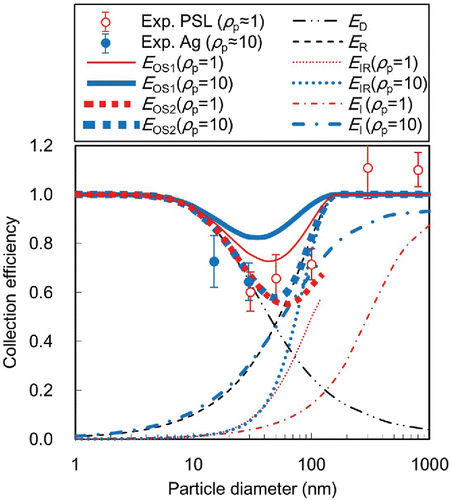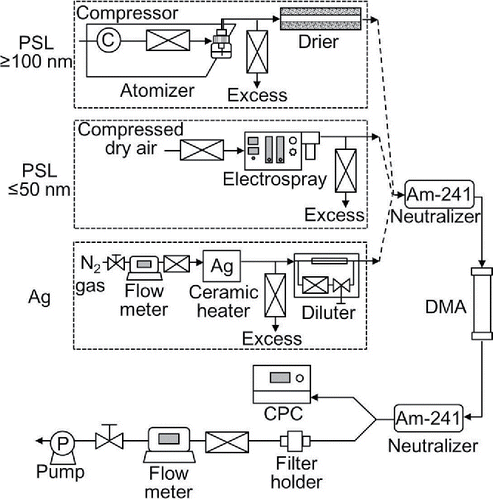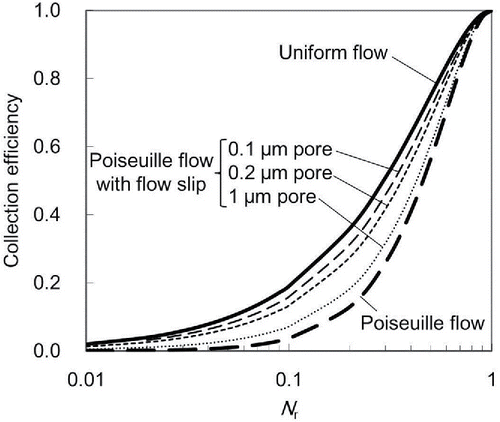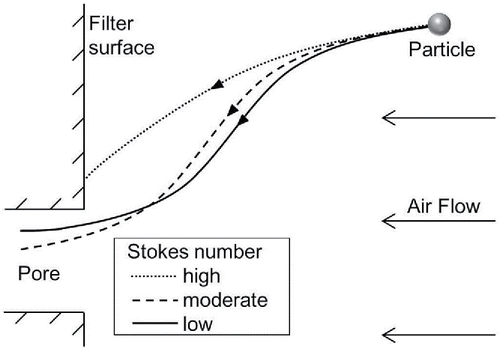Figures & data
Table 1. Structural characteristics of Nuclepore filters, test conditions for collection efficiency, and minimum surface-collection efficiency.
Table 2. Pressure-drops of filters with and without filter support screenaFootnotea.
Figure 3. SEM images of (a) 30 nm Ag particles collected on the 0.2 μm pore filter and (b) 30 nm PSL particles collected on the 0.08 μm pore filter.
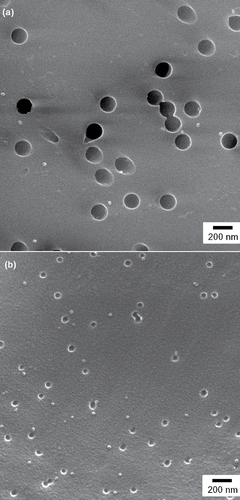
Table 3. Results of experimentally measured surface collection efficiencyaFootnotea.
Figure 5. Surface-collection efficiency of the 0.08 μm pore filter at a face velocity of 1.9 cm·s−1 (n = 9; shown as mean ± standard deviation).
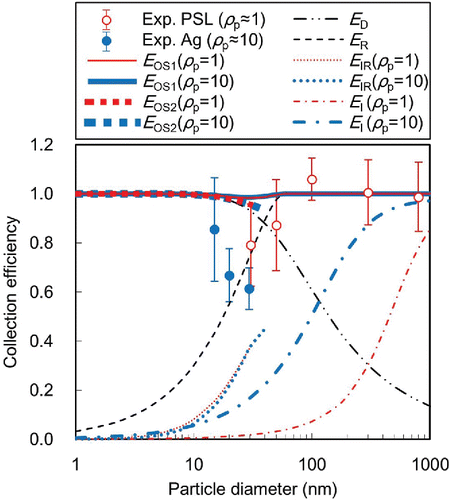
Figure 6. Surface-collection efficiency of the 0.08 μm pore filter at a face velocity of 8.4 cm·s−1 (n = 9; shown as mean ± standard deviation).
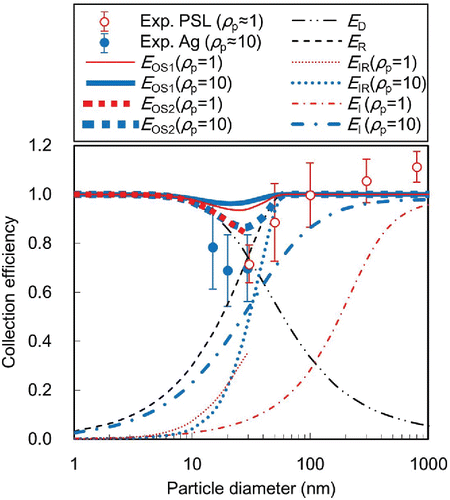
Figure 7. Surface-collection efficiency of the 0.2 μm pore filter at a face velocity of 1.5 cm·s−1 (n = 9; shown as mean ± standard deviation).

Figure 8. Surface collection efficiency of the 0.2 μm pore filter at a face velocity of 8.6 cm·s−1 (n = 9; shown as mean ± standard deviation).
